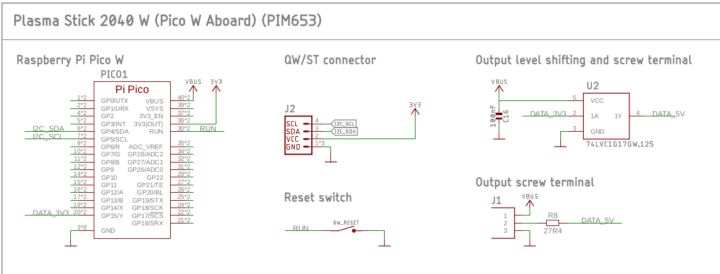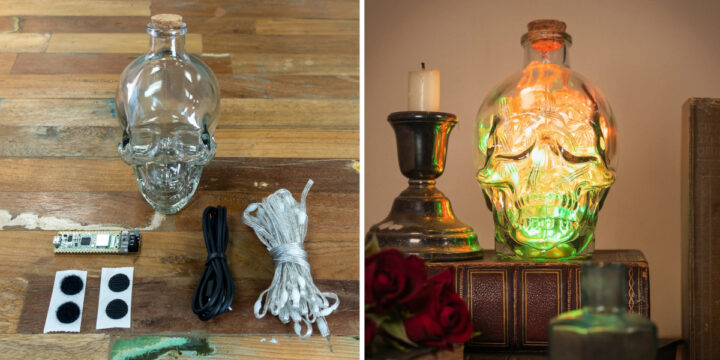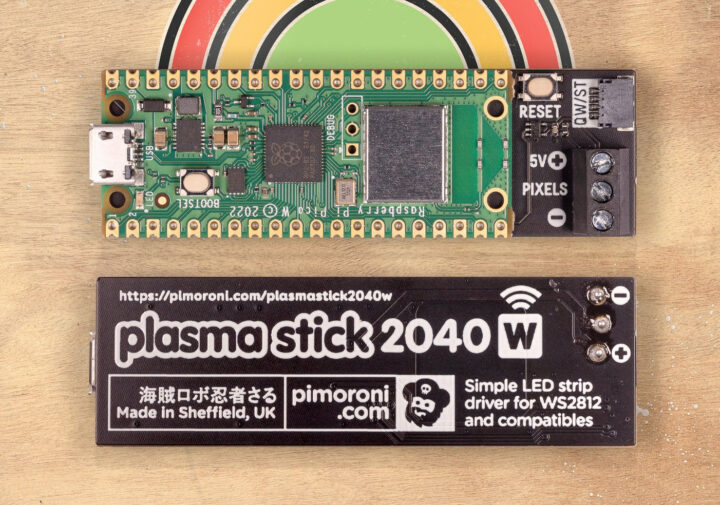Pimoroni Plasma Stick 2040 W is a “Pico W Aboard” kit that adds a 5V RGB LED strip controller to the Raspberry Pi Pico W board, as well as a Reset button, and a Qwiic/STEMMA QT connector for expansion.
Plasma Stick 2040 W specifications:
- Raspberry Pi Pico W
- MCU – Dual Arm Cortex M0+ running at up to 133Mhz with 264kB of SRAM
- Storage – 2MB of QSPI flash supporting XiP
- Connectivity – 2.4GHz wireless module with WiFi 4 and Bluetooth Classic + LE
- USB – 1x micro USB port for power and programming
- LED strip connector – 3-pin screw terminal block compatible with 5V WS2812/Neopixel/SK6812 LEDs
- Expansion – Qw/ST (Qwiic/STEMMA QT) I2C connector
- Misc – Reset button
- Power Supply – 5V via micro USB port
- Dimensions – 67 × 22 × 12 mm
Since it’s based on the Raspberry Pi Pico board it’s programmable with the official C/C++ and MicroPython SDKs, and Pimoroni also maintains a GitHub repository for their RP2040 boards with libraries and samples, and the schematic is also available as a PDF file.

Pimoroni sells the Plasma Stick 2040 Stick W for $12.30 including the Raspberry Pi Pico W, but if you want to easily create a nice-looking project you may as well go with one of their $24.60 to $30.75 Wireless Plasma Kits that include required cables, an RGB LED strip, and optionally a bottle. They have four kits at this time: “Cubey Edition”, “Starry Edition”, “Skully Edition”, and “Bring Your Own Bottle”.

Alternatively, if you prefer a smaller board with a few extra features such as APA102/Dotstar compatibility, you may want to go with the Plasma 2040 board based on Raspberry Pi RP2040 MCU instead of the Pico board which the company sells for $14.45.
Via The Magpi (who gave the board an 8/10 rating)

Jean-Luc started CNX Software in 2010 as a part-time endeavor, before quitting his job as a software engineering manager, and starting to write daily news, and reviews full time later in 2011.
Support CNX Software! Donate via cryptocurrencies, become a Patron on Patreon, or purchase goods on Amazon or Aliexpress





